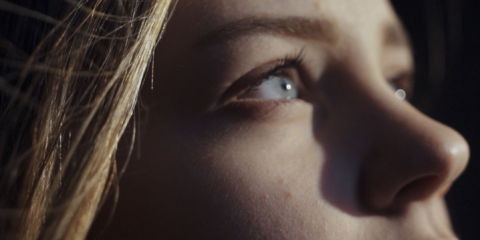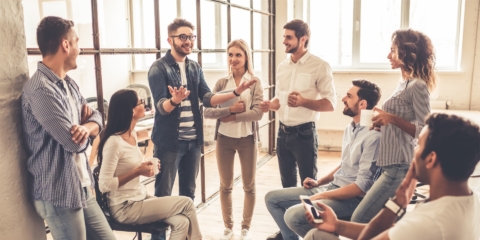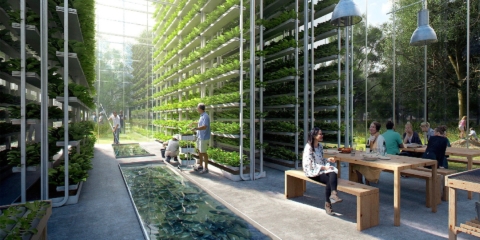Would you like to get notifications from Christian?
The iconic Haussmannian architecture of Paris is a symbol of classic refinement and elegance. Its defining feature – rows of uniform stone buildings – was initially designed to facilitate urban renewal and bring more light, air, and green spaces into the city’s design. But what if we could make it even brighter, figuratively and literally? What if we could leverage advances in artificial intelligence (AI) to renew our cities with greater efficiency than ever before? This goal is no longer just a dream – AI-powered urban redevelopment is changing cities worldwide, helping us reimagine old structures for a brighter and greener future!

CREDIT: Vincent Callebaut Architectures
Drawing from the work of Baron Haussmann, who was responsible for the urban transformation of Paris between 1853 and 1870, the architectural firm Vincent Callebaut Architectures presents a series of futuristic, biologically inspired architectures for the French capital. The architects harness the power of new artificial intelligence tools to create a collection of green ‘Haussmannian’ buildings and biomimetic positive-energy structures called ‘Archibiotics.’ The resulting units are built from biobased materials (such as rammed earth, bamboo, microalgae, mycelium, etc.). They are designed to produce their energy and convert their waste into resources to achieve the national goal of carbon neutrality in 2050.

CREDIT: Vincent Callebaut Architectures
The vision of Vincent Callebaut Architectures is to create a comfortable and sustainable living environment that breathes in harmony with nature. By integrating ‘Archibiotics’ – the biologically inspired architecture – into the city’s existing urban fabric, Paris can become an example of how modern cities can be resilient while preserving the aesthetics of their predecessors.

CREDIT: Vincent Callebaut Architectures
The Archibiotic structures are designed to work together to provide multiple benefits like renewable energy, improved air quality, noise insulation, and reduced carbon emissions. The materials used for these structures are biobased and produced from renewable sources such as rammed earth, bamboo, microalgae, mycelium, and other plant-based materials. These materials require less energy for production and create a higher level of comfort for inhabitants due to their insulating properties. Furthermore, by incorporating natural elements such as green roofs and rainwater harvesting systems into their designs, the architects aim to foster a more harmonious relationship between man-made structures and natural ecosystems.

CREDIT: Vincent Callebaut Architectures
In addition to supporting environmental objectives such as carbon neutrality in 2050, this vision also seeks to improve the health and well-being of residents by providing them with healthier living environments where green spaces are abundant. This is especially important within large cities where there often isn’t much opportunity for people to connect with nature daily; having access to these sorts of spaces can profoundly impact an individual’s mental health by providing a sense of balance in an otherwise chaotic world.

Credit: Vincent Callebaut
Overall, Vincent Callebaut Architectures provides an inspiring vision of what Paris could look like in the future: a city that combines tradition with innovation while ensuring its inhabitants have access to comfortable living conditions that promote health and well-being. Their designs show us that cities worldwide can move towards sustainability while maintaining an aesthetically pleasing urban landscape.
Author: Christian Kromme
First Appeared On: Disruptive Inspiration Daily
Christian is a futurist and trendwatcher who speaks about the impact of exponential technologies like AI on organizations, people, and talents. Christian tailors his presentations to your audience’s specific industries and needs.




Embracing the advancements of technology and AI can enhance our humanity. We can focus on developing our unique talents and skills by automating mundane tasks and freeing up our time. As humans, we can adapt and learn, allowing us to evolve and stay relevant in a rapidly changing world constantly.


Organizations will need to be more fluid, dynamic, and adaptable: the ability to change and adjust in response to new situations and environments. We are on the cusp of a new era of organizations, ones that are more fluid and agile and which behave like swarms we see in nature.




In the future, 3D printing and generative design will allow for products to be designed in a more decentralized manner, and production will take place closer to the customer and fully on-demand. 3D printing technology will also allow for more customization and personalization of products.


The agricultural industry is ripe for disruption. Robotics, AI, and IoT are all technologies that have the potential to radically transform the way we grow food. In combination with vertical farming, these technologies could increase the efficiency and quality of agricultural products.

A human-centered society is one that puts people first and where technology is used to unite and empower people. It is a society that values biological life and dignity above all else. It is a society that recognizes the importance of human relationships and works to strengthen them. In a human-centered society, all members of the community are valued and treated with respect.


The future of healthcare is here. New technologies like AI, IoT, big data, and smart sensors make it possible to become the CEO of your own health. Imagine that your phone can listen to your voice and AI algorithms can detect small nuances in the tone of your voice that indicate specific diseases.
